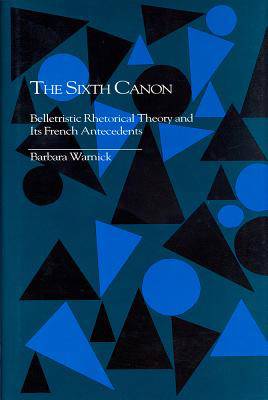
- Retrait gratuit dans votre magasin Club
- 7.000.000 titres dans notre catalogue
- Payer en toute sécurité
- Toujours un magasin près de chez vous
- Retrait gratuit dans votre magasin Club
- 7.000.0000 titres dans notre catalogue
- Payer en toute sécurité
- Toujours un magasin près de chez vous
Description
In the eighteenth century, Scottish rhetoricians Hugh Blair, Adam Smith, and George Campbell were intrigued more by the ways in which discourse appealed to an audience's taste and sense of propriety than by its reasoning. To explore the rhetorical dimensions of aesthetic influence, Blair, Smith, and Campbell looked to seventeenth-century views of beauty, novelty, and "the Sublime." In The Sixth Canon, Barbara Warnick explains how the influence of French belletrists affected a shift in emphasis from neoclassical invention to aesthetics, thereby altering the traditional five-canon model of rhetoric and initiating a revised conception of rhetoric in the modern period.
Warnick traces the influence of Cartesian psycho-physiology and British empiricism on British rhetoricians of the late eighteenth-century. She explains the view that people are persuaded more by discourse that reflects social convention and emotive experience than they are by logical argument. Warnick concludes by arguing that the much-studied texts of Bernard Lamy, François Fénelon, Charles Rollin, Hugh Blair, Adam Smith, and George Campbell should be examined anew, in terms of psychology and aesthetics rather than in the traditional context of the five-canon model.
Spécifications
Parties prenantes
- Auteur(s) :
- Editeur:
Contenu
- Nombre de pages :
- 176
- Langue:
- Anglais
- Collection :
Caractéristiques
- EAN:
- 9780872498921
- Date de parution :
- 31-10-93
- Format:
- Livre relié
- Format numérique:
- Genaaid
- Dimensions :
- 157 mm x 231 mm
- Poids :
- 521 g

Les avis
Nous publions uniquement les avis qui respectent les conditions requises. Consultez nos conditions pour les avis.






